Teacher Resources
Lesson Plans
In eight standards-based lessons accompanied by hands-on and interactive activities, you and your students will meet Mount Everest up-close and personally. From various scientific perspectives, you'll explore the biodiversity of Mount Everest and the Himalayan Mountain ecosystem.
Although the lessons can be completed any order, it is recommended that lessons one and two be completed first. Each lesson is approximately 45 minutes to one hour long and has several options for extending the learning.
Lesson 1: Who's on Top?
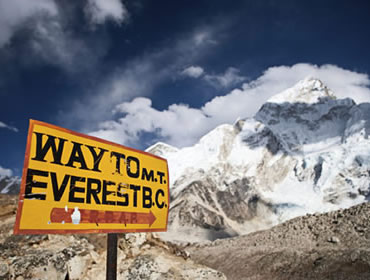
Meet world famous climber Conrad Anker of Bozeman, Montana, Montana State University Geology Professor Dr. Dave Lageson, MSU student Travis Corthouts and the rest of the Everest Education Expedition team. Begin your journey of learning and exploration with Conrad and Dave as they leave their homes in Bozeman to climb the highest mountain in the world. Uncover the goals of the Everest Education Expedition and feel what it might be like to to climb Mount Everest at extreme altitudes.
Lesson Plan:
Download All Documents:
Lesson Handouts:
- Worksheet: Lesson 1 Vocabulary Crossword Puzzle
- Worksheet: Mount Everest & Me
- MSU SciZone #30: Can humans survive at high altitudes?
- Mount Everest Expedition Equipment List
Multimedia:
Lesson 2: Meet Mount Everest
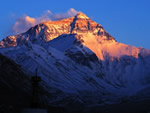
Begin to unravel the layers of Mount Everest through geography and history. Learn where Mount Everest sits in relation to the world, to Asia, and to surrounding countries. Compare Mount Everest to the highest peak in your region. Trace the routes of the first Americans, and other mountaineers of the past, who summitted this peak, and plot the routes this expedition will take as you learn the history of the world's highest mountain.
Lesson Plan:
Download All Documents:
Lesson Handouts:
- Worksheet: Lesson 2 Vocabulary Crossword Puzzle
- Worksheet: Mount Everest & Me
- Worksheet: Historical Timeline
- Worksheet: Asia Map
- Worksheet: Asia Map KEY
- Worksheet: World Map
- Worksheet: Mount Everest Expedition Routes Sketch
- Worksheet: Mount Everest Expedition Routes Sketch KEY
Multimedia:
Lesson 3: Sea Floor to Summit
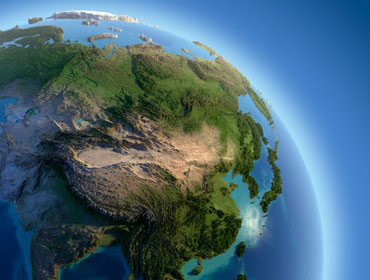
Explore the rocks that lie beneath Mount Everest's summit. Simulate the formation of the Himalayan Mountains and Mount Everest while uncovering the dynamic processes of plate tectonics. Study the rocky layers that Dr. David Lageson will be researching on Mount Everest and investigate the geologic layers that sit below each climber's crampons (ice cleats). Discover how the ancient sea floor now sits on this extreme summit and ponder whether Mount Everest really is the tallest mountain on earth.
Lesson Plan:
Download All Documents:
Lesson Handouts:
- Worksheet: Lesson 3 Vocabulary Crossword Puzzle
- Worksheet: Mount Everest & Me
- Mount Everest Geology Profile
- Mount Everest Geology Profile KEY
- MSU SciZone #31: What is a rock?
- MSU SciZone #29: What is the world's tallest mountain?
- Everest Flip Book
Multimedia:
Lesson 4: What's the Weather?
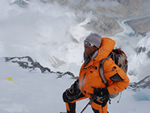
Uncover the difference between climate and weather. Using a climate map of the world, explore climate regions around the Earth and compare your hometown climate and weather to that of Mount Everest. See how the expedition dresses for Everest's weather. Use daily online weather resources to record and graph the weather over an extended period of time both in your hometown and at the top of the world.
Lesson Plan:
Download All Documents:
Lesson Handouts:
- Worksheet: Lesson 4 Vocabulary Crossword Puzzle
- Worksheet: Mount Everest & Me
- Worksheet: When Should You Climb Everest?
- Worksheet: When Should You Climb Everest? KEY
- Worksheet: What's the Weather?
Multimedia:
Lesson 5: Ice in Action
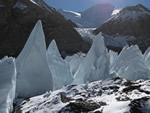
Explore glaciers and how they have shaped landscapes around them. Watch glaciers in Montana and those near Mount Everest change over several years through photographs and time lapse images. Identify parts of a glacier and compare the decline of Himalayan and American glaciers. See how Mount Everest has been shaped by ice in action in the past and how the possible absence of glaciers in the future could change this mountain and those living in its shadows forever.
Lesson Plan:
Download All Documents:
Lesson Handouts:
- Worksheet: Lesson 5 Vocabulary Crossword Puzzle
- Worksheet: Mount Everest & Me
- MSU SciZone#28: What is a glacier?
- Classroom Activity: Research Gear and Equipment Photo Monitoring/Repeat Photography
Multimedia:
- How a Glacier Forms
- The Glaciers of Mount Everest
- The Shape of Mount Everest
- What is the Khumbu Icefall
- How the Khumbu Glacier is Receding
- Glacier National Park Repeat Photography Slideshow
Lesson 6: Everest Extremes: Biodiversity
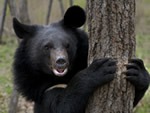
Identify and categorize plants and animals living in the Mount Everest ecosystem with an emphasis on which species are endangered, threatened or a species of special concern. Gain a deeper understanding of and connection to the biodiversity of the Himalayan Ecosystem by studying individual species and creating a Himalayan food web. Develop an appreciation of how connected all ecosystems are including the one in your own backyard.
Lesson Plan:
Download All Documents:
Lesson Handouts:
- Worksheet: Lesson 6 Vocabulary Crossword Puzzle
- Species Cards
- Worksheet: Mount Everest Climate Zones
- Worksheet: Mount Everest & Me
Lesson 7: One Mountain, Many Cultures
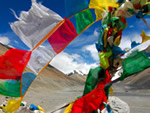
Mount Everest rises above a land that is home to a diverse population of indigenous cultures. This region is home to people that have lived in harmony with their environment for centuries. Discover what it is like to live in a land of extremes below the highest mountain in the world and the significance of ceremonies and prayer flags. Explore this sacred mountain and sacred mountains near you.
Lesson Plan:
Download All Documents:
Lesson Handouts:
Multimedia:
Lesson 8: Climb into Action!

Get involved! There are actions we can take at home, in our communities and at our schools that will help slow climate change and preserve Mount Everest and its glaciers, creatures, and people. Explore ways you affect the earth's ecosystems and how you can make a difference using all your knowledge of Mount Everest and its cultures.
Lesson Plan:
Download All Documents:
Lesson Handouts:
- Worksheet: Lesson 8 Vocabulary Crossword Puzzle
- Worksheet: It's All Connected
- Worksheet: Mount Everest & Me

